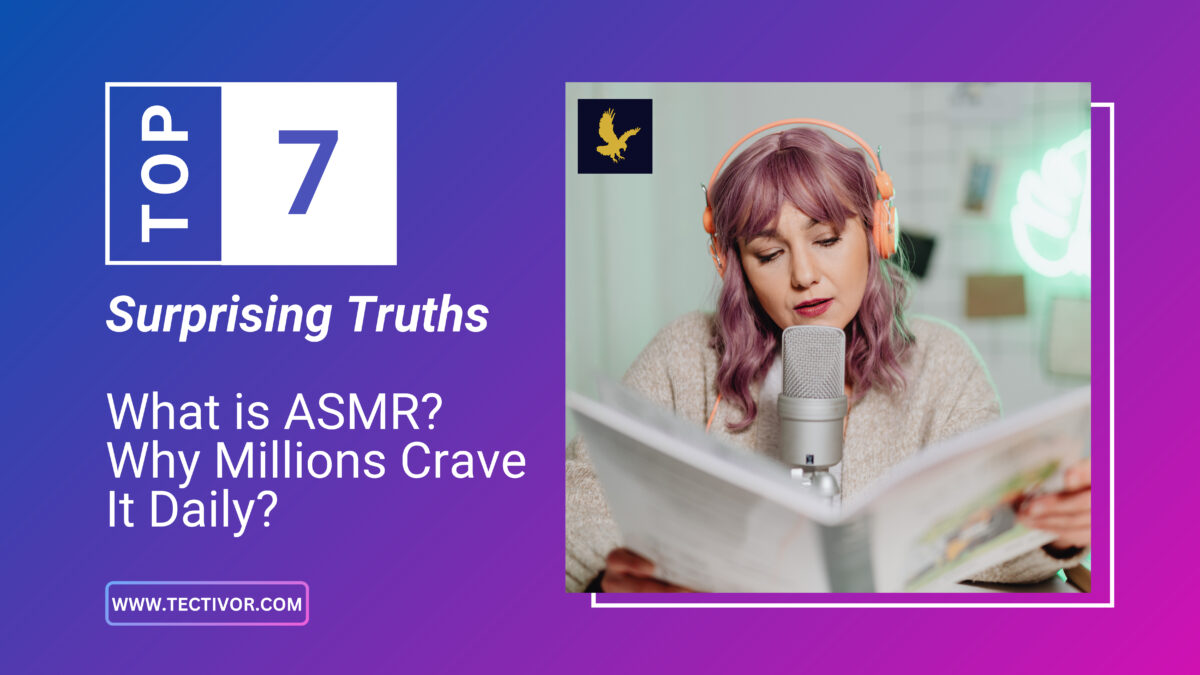What is ASMR and how does it work? The Sensation You Didn’t Know You Needed
Have you ever felt a tingling sensation down your spine when someone whispered near your ear or when you heard the gentle sound of crinkling paper? That pleasant shiver is what millions of people experience through ASMR – short for Autonomous Sensory Meridian Response.
ASMR is a sensory experience often triggered by soft sounds, gentle visuals, or personal attention cues. Viewers describe it as a calming, static-like feeling that begins at the scalp and flows down the neck and spine. It’s not just a trend — it’s a deeply personal and therapeutic phenomenon that’s becoming part of people’s everyday relaxation rituals.
Although the term “ASMR” was coined in 2010, the experience itself has existed for decades — we just didn’t have a name for it. Whether it’s the comforting voice of a librarian, the rhythmic tapping of fingernails, or a softly spoken bedtime story, these “triggers” evoke a unique, calming sensation for many.
ASMR videos aim to recreate those exact moments in digital form, helping viewers tap into that sense of peace whenever they need it.
Table of Contents
The Science Behind the Tingles: How ASMR Calms Your Brain
ASMR for stress and anxiety relief –
While ASMR might feel magical, there’s real science behind why it makes people feel so relaxed, sleepy, or emotionally comforted.
Researchers believe ASMR activates areas of the brain associated with relaxation, empathy, and social bonding — similar to the feelings we get during comforting human interaction. That’s why ASMR often mimics personal attention scenarios, like someone whispering to you, brushing your hair, or performing a gentle medical check-up.
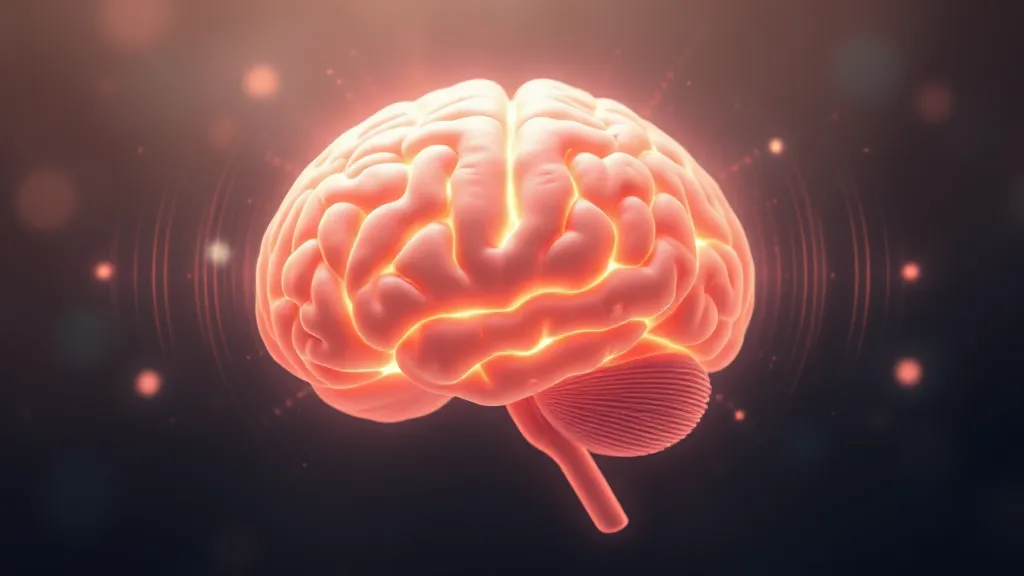
🔬 Brain Activity and ASMR
Studies using fMRI scans (functional MRI) have shown that people who experience ASMR exhibit increased activity in the medial prefrontal cortex, an area tied to social behavior, emotional regulation, and self-awareness. It’s also linked to the brain’s default mode network — the part activated when you’re daydreaming, meditating, or relaxing.
Additionally, many users report feeling lower heart rates and increased calmness while watching ASMR videos. This aligns with how the parasympathetic nervous system kicks in, the same system responsible for rest, digestion, and recovery — the opposite of our “fight-or-flight” stress response.
🧠 Why Do Some People Feel It and Others Don’t?
Interestingly, not everyone experiences ASMR tingles. It’s still unclear why, but it may relate to neurological sensitivity or mirror neuron responsiveness — the brain cells that help us “feel” what others feel. People with high emotional empathy often report stronger ASMR sensations.
And unlike other relaxing content like white noise or music, ASMR is highly trigger-dependent. The subtle tapping that soothes one person might irritate another. That subjectivity is part of what makes ASMR such a deeply personal and fascinating phenomenon.
Why People Are Turning to ASMR More Than Ever (and What They’re Searching For)
In an increasingly noisy world, people are actively seeking silence, serenity, and sensory relief — and ASMR is answering that call. But the rise of ASMR isn’t just about tingles or novelty; it’s rooted in psychological needs, shifting media habits, and an evolving focus on mental wellness.
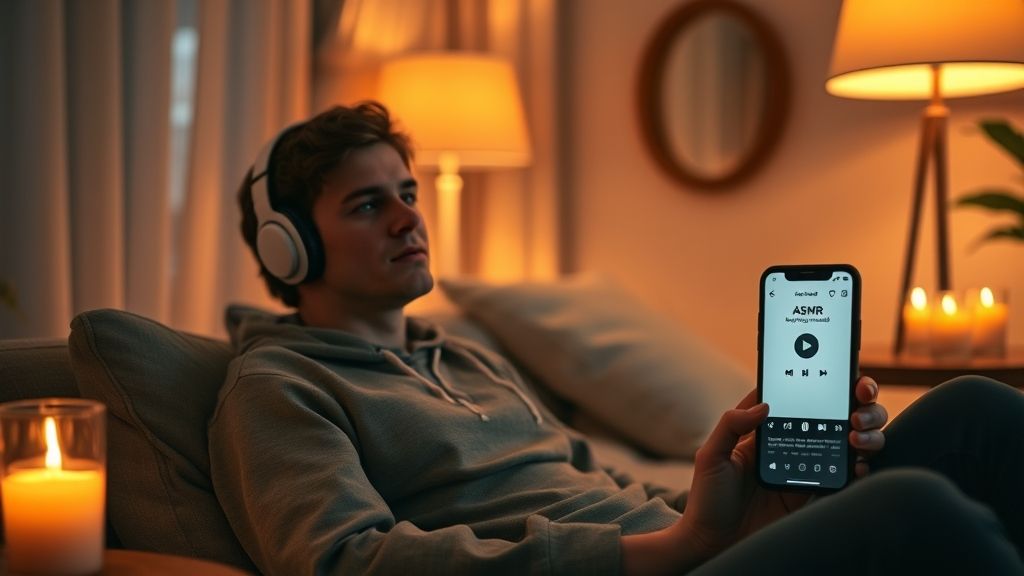
🧘♀️ A Digital Escape from Stress
One of the primary reasons people turn to ASMR is to decompress from stress and anxiety. Whether it’s work overload, social burnout, or insomnia, millions are typing in searches like:
- “ASMR for sleep”
- “ASMR for stress and anxiety relief”
- “Relaxing whispering ASMR”
These aren’t just casual curiosities — they’re cries for calm. ASMR creates a controlled environment of peace, giving the brain a break from over-stimulation and information overload. For many, it serves as a bedtime ritual or a midday breather from digital chaos.
😌 The Comfort of Intimacy Without Social Pressure
ASMR’s personal attention themes — like role-play of a caring doctor, friend, or makeup artist — simulate real-life interactions in a non-threatening, non-demanding way. It satisfies a human craving for connection, especially for those experiencing loneliness, social anxiety, or emotional exhaustion.
And during events like the COVID-19 lockdowns, ASMR viewership surged as people sought digital companionship that felt safe, gentle, and soothing.
📈 The Rise of “Unconventional” Wellness Content
We’re witnessing a cultural shift — especially among Gen Z and Millennials — toward embracing alternative mental wellness tools. Alongside meditation apps and breathing exercises, ASMR is emerging as a legitimate form of self-care.
It’s not just whispering anymore, either. Creators now blend ASMR with:
- Affirmations and healing words
- Sound therapy using rainsticks, gongs, or crystals
- Soft-spoken storytelling and guided visualizations
These hybrid formats appeal to people looking beyond traditional wellness — and it shows in the YouTube search trends.
🔍 Search Trends Reflect This Shift
A quick dive into YouTube’s search data reveals a pattern:
- “ASMR sleep” and “ASMR for anxiety” are consistently among the top queries.
- ASMR videos average longer watch times — signaling deep engagement.
- Viewers are not just watching passively; they’re seeking specific triggers that match their personal emotional needs.
The takeaway? ASMR is no longer a fringe internet trend — it’s a mainstream response to modern mental fatigue.
What Triggers the Tingles: Popular ASMR Styles and Why They Work
Best ASMR triggers and styles –
Not all ASMR is created equal. What sends a pleasant chill down one person’s spine might leave another completely unaffected. That’s because ASMR is highly trigger-dependent — and understanding these triggers reveals a lot about how our senses are wired for calm.

Here are the most popular ASMR content types and why they work so well:
👄 Whispering & Soft Speaking
The most iconic ASMR trigger. Whispering creates intimacy and focused attention, which activates the brain’s social bonding areas. Whether it’s a soft-spoken story, a whispered greeting, or even inaudible gibberish, these videos simulate closeness in a soothing, non-intrusive way.
Why it works: The brain interprets gentle, quiet speech as comforting — similar to how we respond to lullabies or being read to as children.
🫰 Tapping & Scratching
Tapping on wooden boxes, scratching textured fabrics, or drumming fingernails on glass — these rhythmic sounds stimulate the brain’s anticipation and satisfaction pathways. Viewers often describe them as “hypnotic” or “mesmerizing.”
Why it works: Repetitive, low-frequency sounds help the brain shift into a meditative state, aiding in stress reduction and mental focus.
🧑⚕️ Roleplay (Medical, Spa, Makeup, etc.)
ASMR roleplay videos often simulate one-on-one experiences like doctor visits, spa treatments, or friendly conversations. They provide personal attention in a controlled, caring scenario, which many people find calming.
Why it works: These mimic real-life soothing situations, triggering the brain’s safety and trust mechanisms, especially in those who value structured, supportive interactions.
🎧 Binaural Soundscapes
Some creators use 3D microphones to produce immersive “binaural” effects — meaning the sound moves between left and right ears, simulating real-life spatial awareness. It’s like the creator is in the room with you.
Why it works: This immersive quality enhances presence and realism, making the experience feel almost tangible. It’s especially effective for sleep and deep relaxation.
🎨 Visual Triggers & Hand Movements
Hand gestures, slow movements, or visually satisfying tasks (like painting or folding towels) are also common ASMR triggers. These visuals create a slow sensory rhythm that eases visual overstimulation.
Why it works: Slow, repetitive visuals cue the brain to mirror calm behavior, which reduces cognitive noise and supports relaxation.
🍯 Eating & Mouth Sounds (ASMR Mukbang)
Controversial but incredibly popular, some ASMR channels focus on the amplified sounds of chewing, sipping, or crunching. These can trigger either pleasure or discomfort — but for fans, they deliver a rich sensory experience.
Why it works: For those sensitive to auditory detail, these sounds stimulate sensorimotor brain areas and may evoke comforting memories of meals or care.
🧽 Unintentional ASMR
Interestingly, some of the most effective ASMR isn’t made on purpose. Old instructional videos, soft-spoken lectures, or footage of someone doing a repetitive task can unintentionally trigger ASMR.
Why it works: These clips offer natural, unedited calm, free from the performance pressure of typical content — making them feel authentic and soothing.
In short, ASMR works because it taps into deep neurological preferences for rhythm, gentleness, and personal attention. The key is finding the style that resonates with your brain’s unique preferences.
The Role of YouTube: How Algorithms and Audio Tech Are Powering the ASMR Boom
ASMR audio setup and recording tips –
ASMR isn’t just a sensory phenomenon — it’s also a platform-driven movement, and YouTube is at the heart of it. From hyper-targeted recommendations to crystal-clear binaural audio, the rise of ASMR has been supercharged by the perfect marriage of demand, data, and technology.
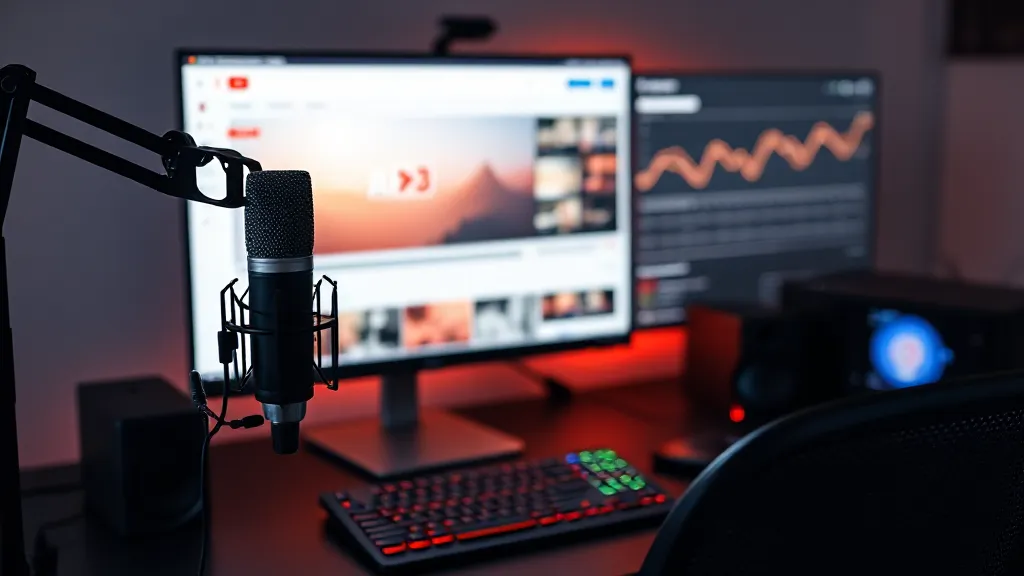
🤖 YouTube’s Algorithm Loves Long Engagement
ASMR content tends to generate longer watch times than most other videos. A 30-minute whisper session or a 1-hour tapping compilation means users stay on the platform longer — something YouTube’s algorithm prioritizes heavily.
That’s why once you watch just one ASMR video, you’re likely to get flooded with similar suggestions — often even more personalized than your first pick. And because ASMR is so niche and diverse, users tend to click deeper into rabbit holes, exploring different types of triggers, styles, and creators.
The result? ASMR becomes a self-reinforcing feedback loop — more engagement drives more visibility, which leads to more content creation and even more search traffic.
🎧 Audio Technology: From Smartphones to Studio Mics
In the early days, ASMR creators used basic webcams and built-in microphones. Today, many are equipped with:
- 3Dio binaural microphones that replicate ear-to-ear sound
- High-definition audio processing
- Soundproof studios to eliminate background noise
This evolution in production quality has made the ASMR experience more immersive, making it feel like the viewer is right there in the room. In turn, it attracts more serious viewers — not just curious clickers — building loyal fanbases and niche communities.
🔊 Rise of Headphone Culture
ASMR is deeply reliant on sound fidelity. That means headphones aren’t optional — they’re essential. As wireless earbuds, noise-canceling headsets, and smartphone listening become everyday norms, ASMR is gaining wider accessibility.
People now listen to ASMR:
- Before bed
- During meditation
- While commuting (with noise cancellation)
- Even in the background during work or study
This “always-on audio” culture has opened the door for ASMR to become a mainstream tool for self-regulation, not just a bedtime curiosity.
📱 Mobile Optimization and Shorts
ASMR content has also adapted to changing formats. Many creators now make:
- Vertical ASMR Shorts with instant triggers
- Loopable audio snippets for TikTok and Instagram
- Relaxing livestreams and real-time chats
All of this ties into mobile-first consumption habits. ASMR is no longer just a niche on desktop YouTube — it’s become a portable, customizable wellness companion across devices and platforms.
In essence, ASMR’s boom isn’t accidental — it’s algorithmically and technologically supported. YouTube’s data-backed system has made it easy to discover, audio innovation has made it more immersive, and users have made it part of their emotional toolkit.
Behind the Calm: The Technical Art of ASMR Production
While ASMR may feel effortless, the best content is often the result of meticulous technical execution. Sound quality, environment, and visual presentation are all finely tuned to create a deeply immersive and effective experience.
Here’s a look at the core technical elements behind great ASMR:
🎙️ Binaural Microphones: Creating 3D Soundscapes
One of the defining tools of professional ASMR creators is the binaural microphone — designed to simulate human hearing. These setups often feature two microphones spaced like ears, capturing spatial audio so that sounds move naturally from one side to the other.
- Commonly used mic: 3Dio Free Space Binaural Microphone
- Result: The listener experiences ear-to-ear movement, enhancing realism and the tingling sensation
- Essential for: Whispering, roleplays, and precision soundscapes
🔇 Sound Isolation: Silence Is Sacred
For ASMR, background noise can completely break the illusion. Many creators invest in:
- Soundproof rooms or vocal booths
- Noise gates and filters in post-production
- Shock mounts and pop filters to eliminate mic pops and vibrations
The goal is a clean, controlled audio environment, where every detail — a breath, a tap, a whisper — stands out in pristine clarity.
💡 Lighting & Visual Composition
While sound is king, visual triggers play a supporting yet important role in modern ASMR.
- Soft, diffused lighting creates a cozy, low-stimulation atmosphere
- Close-up framing mimics personal space, enhancing intimacy
- Deliberate hand movements (brushing, tapping, waving) add rhythmic visual stimulation
Some creators even incorporate light-based triggers, such as:
- LED lights that change with sound
- Flashing or scanning lightbars for visual ASMR
These subtle visual cues complement the audio to create a multi-sensory feedback loop.
🖥️ Editing & Post-Production
ASMR editing is not about flashy cuts — it’s about preserving flow and enhancing clarity:
- EQ (equalization) to highlight key frequencies (often low-mid for tapping, high-mid for whispers)
- Stereo widening for spatial realism
- Gentle fades to avoid jarring transitions
Professional ASMR videos are typically exported in high-bitrate audio formats (320 kbps or higher) and uploaded in HD or 4K to maintain crisp detail across senses.
In short, ASMR may seem simple, but it’s a technical performance beneath the surface — combining the precision of sound engineering with the subtlety of performance art.
The Future of ASMR: What’s Next for This Sensory Movement?
ASMR has moved far beyond its whispery origins — and the next five years promise even deeper integrations into lifestyle, tech, and wellness ecosystems. Here’s where the movement is heading:
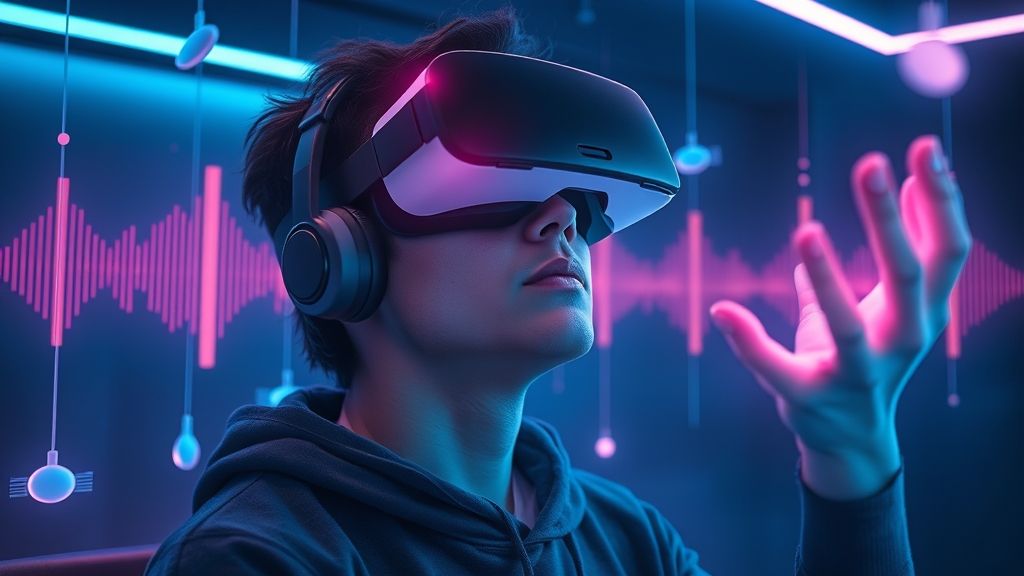
🧠 Mainstream Wellness Integration
ASMR is becoming part of mainstream self-care. Expect to see it featured in:
- Mental health apps (like Calm or Headspace)
- Therapy sessions targeting anxiety, insomnia, or PTSD
- Corporate wellness programs offering audio spaces for decompression
It’s no longer just about “tingles” — it’s about nervous system regulation and mindful recovery.
🌐 The VR and AR Experience
As virtual reality (VR) and augmented reality (AR) evolve, ASMR is likely to gain new dimensions:
- Immersive VR rooms where users feel physically present with the creator
- Tactile feedback suits or haptic gloves that add a physical layer to virtual ASMR
- Augmented overlays turning mundane moments into interactive ASMR environments
Platforms like Meta Horizon, Apple Vision Pro, or even gaming engines could host fully sensorial ASMR worlds where users unwind in 3D sound bubbles.
📡 AI and Personalized ASMR
With machine learning and voice synthesis, ASMR may become ultra-personal:
- AI can learn your favorite triggers (e.g., tapping speed, pitch, tone) and auto-generate custom sessions
- Text-to-ASMR tools could let users type a prompt and receive a soothing video on demand
- Emotion-tracking devices (like wearables) might auto-play ASMR based on your stress level
What once was artisanal is now heading toward mass-personalized sound therapy.
🛒 ASMR in Marketing and Retail
Brands are catching on. ASMR will continue to appear in:
- Product launches (think whispery unboxings or “oddly satisfying” demos)
- Interactive ads using ASMR to build emotional resonance
- Retail experiences (in-store sound booths or “calm zones”)
Expect ASMR to become a commercial emotional tool, used not just for wellness — but influence.
ASMR’s next chapter is about integration, innovation, and immersion — reaching new audiences through tech and evolving cultural needs.
Is ASMR the Future of Digital Wellness?

Future of ASMR and digital wellness –
Whether you’re a skeptic or a diehard fan, one thing is clear: ASMR is no longer a fringe trend. It’s a powerful, sensory-based tool helping millions of people cope with an overstimulated world.
Why it’s likely here to stay:
- It aligns with rising mental health awareness
- It delivers non-pharmaceutical stress relief
- It fits mobile-first, audio-first lifestyles
- It offers intimacy and calm in an increasingly impersonal digital space
While some may still view it as “weird YouTube stuff,” the science, demand, and user behavior all point in one direction: ASMR is becoming a pillar of digital self-care.
Just as yoga and meditation went from niche to norm, ASMR is quietly — and whisperingly — doing the same.
💡 Stay ahead of the future! Follow us on:
Facebook | LinkedIn


